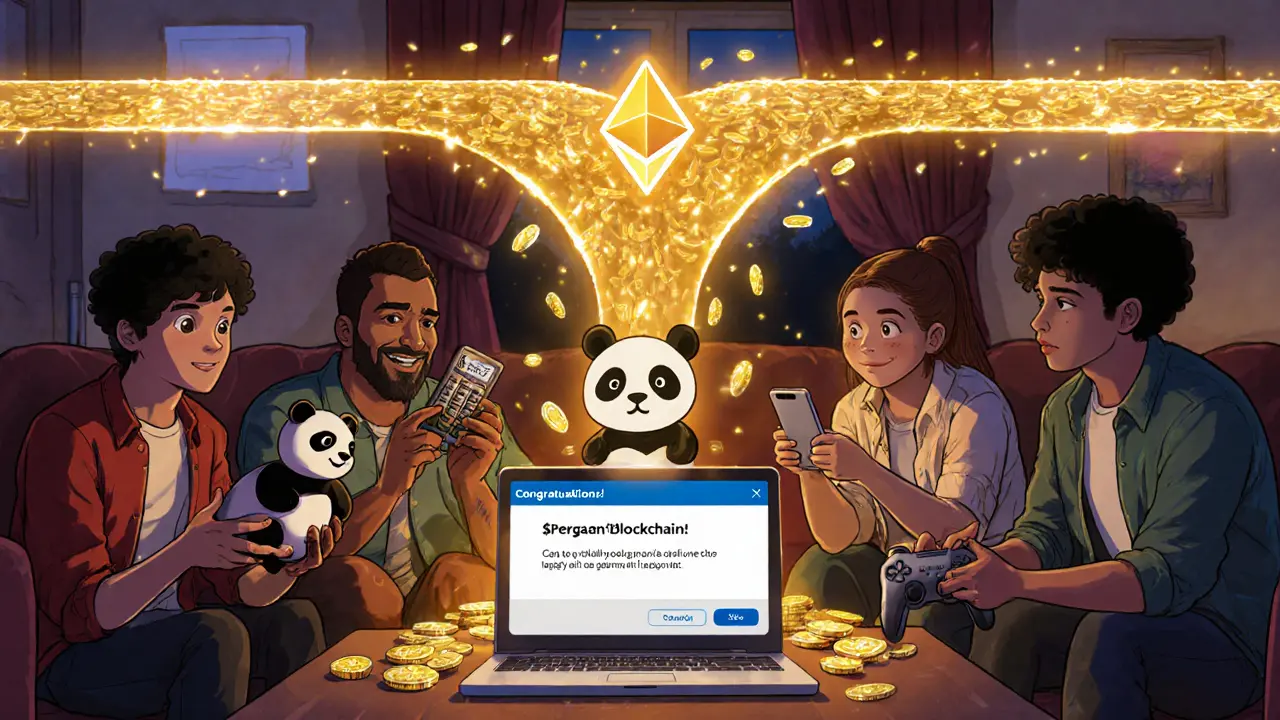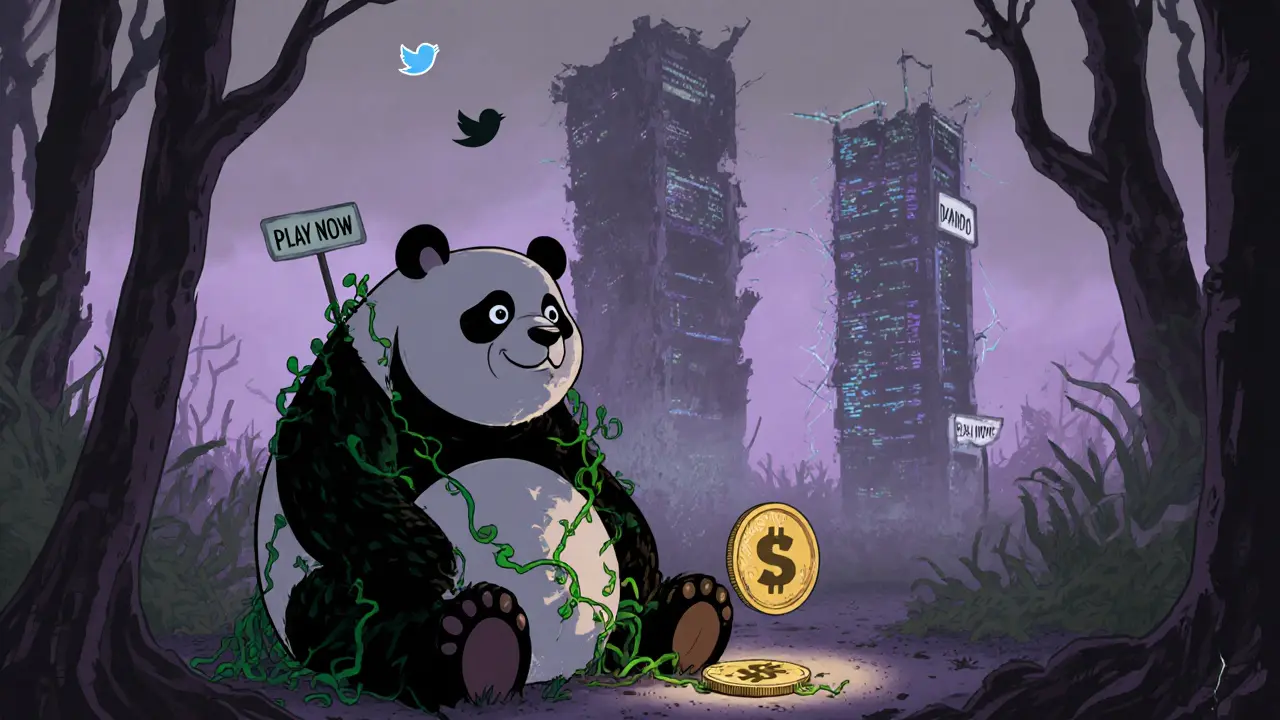 Nov, 5 2025
Nov, 5 2025
Airdrop Profitability Calculator
Calculate Your Airdrop Profitability
Enter the token value you received and gas fee to see if it's worth claiming.
Remember: As seen in the PandoLand case study, token value can drop significantly after claiming.
"If the reward is $1,000 and the fee is $10, it's still worth it. But if it's $50 and the fee is $20? Think twice." - PandoLand lesson
Back in March 2025, a small but sharp crypto airdrop made waves in the Play-to-Earn space: PandoLand’s $PANDO token distribution. It wasn’t the biggest airdrop that year, but it had a clean design, clear rules, and a surprising level of focus. If you missed it, you’re not alone - only 500 people won. And if you’re wondering whether it still matters today, the answer is: it still teaches us something important about how gaming tokens start, and why most of them fade.
What Was the PandoLand Airdrop?
PandoLand was a blockchain-based game built on Ethereum, themed around pandas exploring a virtual world. Players could earn $PANDO tokens by completing quests, collecting NFT items, and trading digital land. The game claimed you didn’t need to spend money to start - just sign up, play, and earn. But the real hook wasn’t the gameplay. It was the airdrop. The airdrop ran from March 4 to March 10, 2025. No complicated staking. No NFT requirements. No testnet mining. Just Twitter. If you followed the official PandoLand account, retweeted their posts, and tagged three friends, you got entered into a draw. That’s it. 500 winners. $500,000 total value. $1,000 worth of $PANDO tokens per winner. Simple. Fair. Fast. The total supply of $PANDO was 1 billion tokens. The airdrop used only 500,000 of them - just 0.05%. That’s tiny. Most projects give away 5% to 10% upfront. PandoLand kept the rest for team, development, and future incentives. That told early observers one thing: they weren’t trying to flood the market. They wanted to build a core group.How Did You Actually Claim the Tokens?
Winners got an email with a link to a claiming portal. All you needed was an Ethereum wallet - MetaMask, Trust Wallet, anything that supported ERC-20 tokens. No KYC. No ID. Just connect your wallet, confirm the transaction, and the tokens landed in your account. The whole process took under 5 minutes for most people. Some winners reported gas fees of around $3 to $8 to claim, depending on Ethereum network congestion. That’s normal. But it did mean a few people with very small wallets skipped claiming because the fee ate into their $1,000 reward. That’s a common problem with airdrops - the cost to claim sometimes outweighs the reward for small holders. The airdrop didn’t require you to hold any NFTs or play the game. That made it easy for speculators to jump in. And they did. Social media was full of people who had never heard of PandoLand before March 4 but suddenly knew exactly how many retweets they needed. That’s not necessarily bad - it brought attention. But it also meant the community was thin on actual players.How Did It Compare to Other Airdrops in 2025?
March 2025 was packed with crypto airdrops. Arena Two ($ATWO) on BNB Chain had a tournament-style system running for over a year. Play AI Network ($PLAI) used an "Aura" point system where you earned points by playing games across multiple platforms - and you had to keep playing until Q4 2025 to claim anything. PandoLand stood out because it was over quickly. No grind. No waiting. Just enter, win, get paid. That made it popular among people who don’t have hours to spend grinding daily tasks. But it also meant the project had to deliver on the game itself - fast - or risk being forgotten. By contrast, 0G’s airdrop in September 2025 used NFT snapshots and progressive rewards over weeks. That was more complex, but it locked in long-term engagement. PandoLand’s model was like a flash sale. 0G’s was like a subscription.
What Happened After the Airdrop?
Here’s the real question: did the game survive? After March 2025, PandoLand’s Twitter went quiet. No major updates. No new NFT drops. No gameplay demos. The website still loaded, but the game server was slow, and many in-game features were broken. A few YouTube videos showed people playing, but they were mostly old clips from before the airdrop. By June 2025, Discord activity dropped to under 50 active members. The token price, which spiked to $0.02 right after the airdrop, settled around $0.003 by October. That’s a 85% drop. Not a crash - but not a success either. The problem wasn’t the airdrop. It was the lack of follow-through. The team distributed tokens, but didn’t build a game people wanted to keep playing. That’s the trap most Play-to-Earn projects fall into. They focus on the token launch, not the experience. A few winners cashed out immediately. Others held, hoping for a comeback. Some even joined the game’s community forum to suggest improvements - but got no replies. That’s the quiet death of a crypto project: no announcements, no updates, just silence.Was It Worth It?
For the 500 winners? Yes. $1,000 is $1,000. Even if the token dropped 90%, most still made money if they sold early. For the project? No. A successful airdrop isn’t just about handing out tokens. It’s about turning strangers into players. PandoLand got the attention, but didn’t keep it. They had a strong concept - panda-themed NFT exploration on Ethereum - but never delivered the fun. Compare that to Axie Infinity in 2021. They started small, but kept updating the game, added new creatures, fixed bugs, and built a real economy. PandoLand didn’t. And that’s why you don’t hear about it anymore.
What Can You Learn From PandoLand’s Airdrop?
If you’re thinking about joining the next crypto airdrop, here’s what PandoLand teaches you:- Check the team’s track record. Did they launch anything before? Are they active on GitHub or Twitter? PandoLand had no public code or dev updates.
- Don’t assume the game is good just because the airdrop is simple. Easy entry = easy speculation. Real value comes from gameplay, not token drops.
- Claim your tokens fast. Gas fees matter. If the reward is $1,000 and the fee is $10, it’s still worth it. But if it’s $50 and the fee is $20? Think twice.
- Watch what happens after the airdrop. If the project goes silent, walk away. No updates = no future.